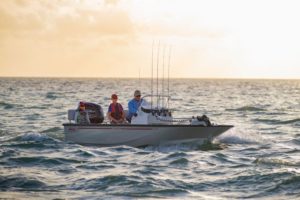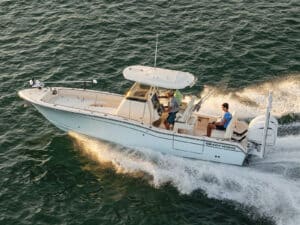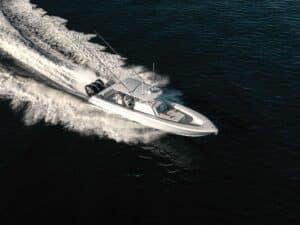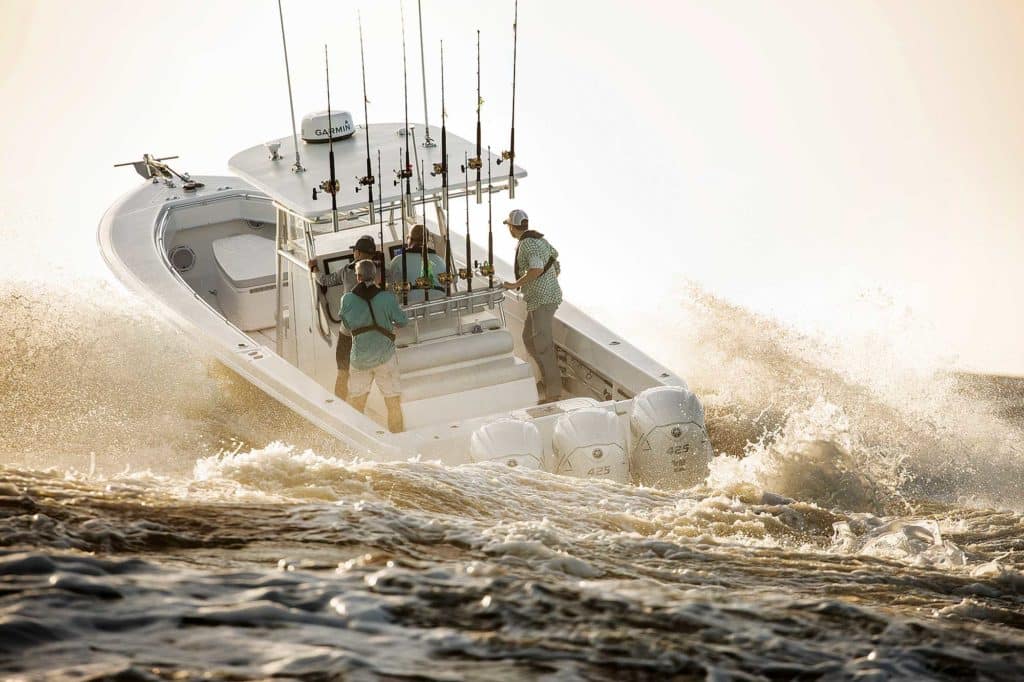
A few months ago, I fished aboard a boat with no handrails around the center-console. The skipper had the advantage of holding onto the wheel, but I was left with nothing — a situation that grew more precarious as the boat traversed rough water and reached speeds in excess of 50 mph.
This vessel exemplified poor planning when it came to crew safety. Thank goodness most new boats today offer plenty of places to hold on. Grab rails are critical when moving about the deck in heaving seas and when bracing yourself while underway.
In the absence of handrails, crewmembers reach for anything nearby, such as the edge of an acrylic windshield or a fiberglass antenna, to steady themselves — and that can result in busted parts and pricey repairs. If this sounds familiar, you probably need more handrails.
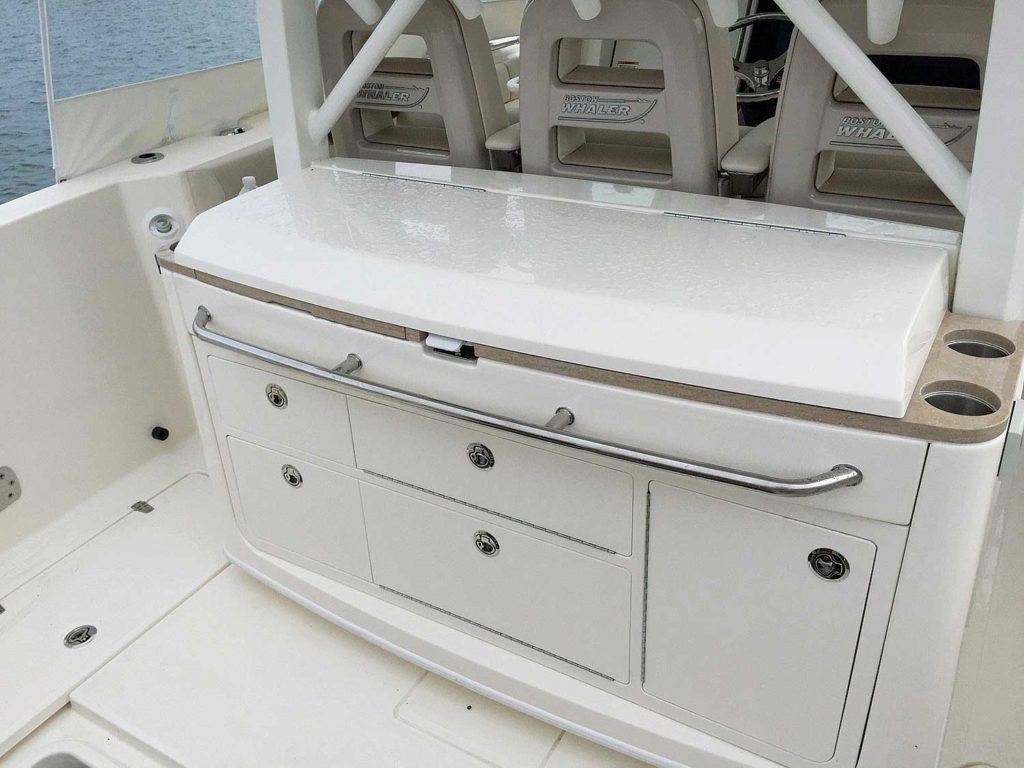
Helm Handles
Aboard center-console fishing boats, the uprights and T-top frame often present the most convenient and secure handholds. In fact, the frames for many tops are designed with specially positioned rails, usually welded to the uprights. Some of these grab rails even sport contours that mesh ergonomically with your fingers. If you’re having a top built for your boat, explore with the fabricator the idea of adding handholds based on where crewmembers are usually positioned while underway.
If the boat does not have a top, think seriously about a console rail that arches over the helm and provides a place for your co-pilot to hold tight. Ensure that the handrail is easy to reach and comfortable to grip, whether the passenger is seated or standing.
When not positioned next to the captain, anglers often stand abaft the helm seats or leaning post when the boat is running to and from the fishing grounds. However I find on some boats this area often lacks a suitable handrail. Many times crewmembers are left to grip the fishing rods in the rocket launcher, not the most secure situation.
If the T-top uprights extend aft, think about adding some rails for passengers behind the helm. You can also add a horizontal rail that wraps around the leaning post or rigging station. Or you can install an aftermarket grab rail such as the 24-inch stainless-steel handrail from West Marine (about $30).
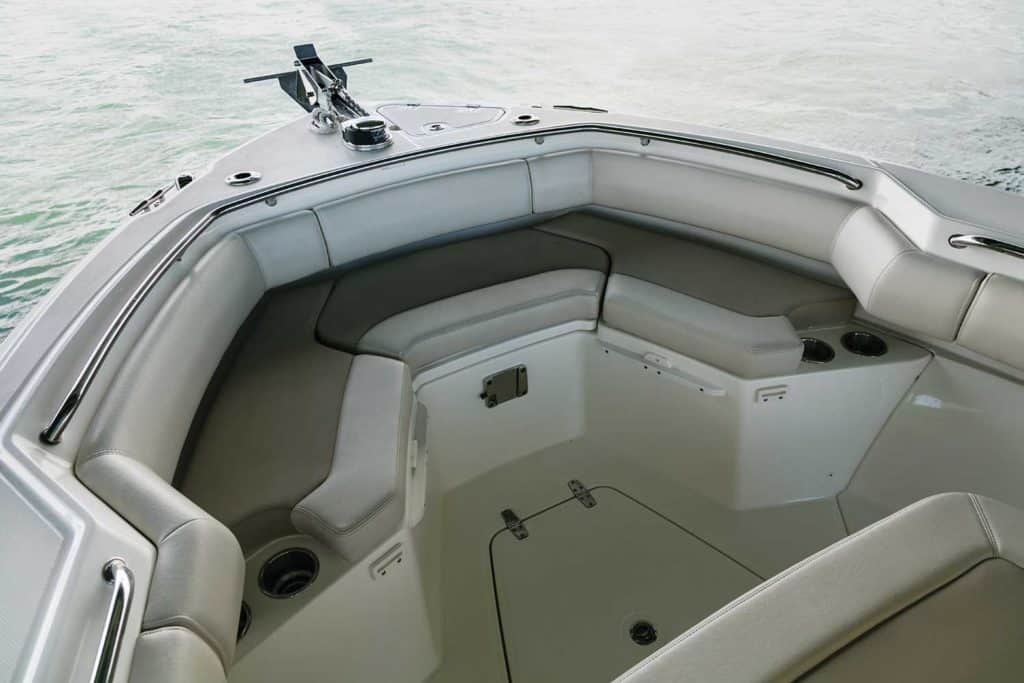
Bow Rails
With an emphasis on keeping the topsides free of snags, most of today’s center-console fishing boats dispense with high-profile bow rails, and some offer no handholds around the foredeck at all.
Most new models, however, feature a recessed, low-profile rail on the inside of the gunwale around the bow. This gives crewmembers something to grab when going forward to man the anchor, cast a line or deploy a drift sock.
Installing Handrails
Whether you or a boat rigger installs the handrails on your boat, make sure each is securely through-bolted with stainless-steel hardware, including fender washers or a backing plate behind the fixture. Avoid using self-tapping screws to install a handrail; these fasteners can tear loose too easily, and will do so at the most inopportune times.
When looking to buy a new or previously owned boat, imagine yourself having to go forward in rough water. Where would you or your crew hang on? If the boat does not have a bow railing, a marine fabricator might be able to add a curving, low-profile version that keeps the rail cap free of obstructions.
You can also add a handrail along the underside of the hardtop for crew security between the fore and aft decks. Prefabricated 1¼-inch-diameter stainless-steel handrails ranging from 12 to 72 inches in length are available from Fisheries Supply (starting at about $136) and can work well in such applications.
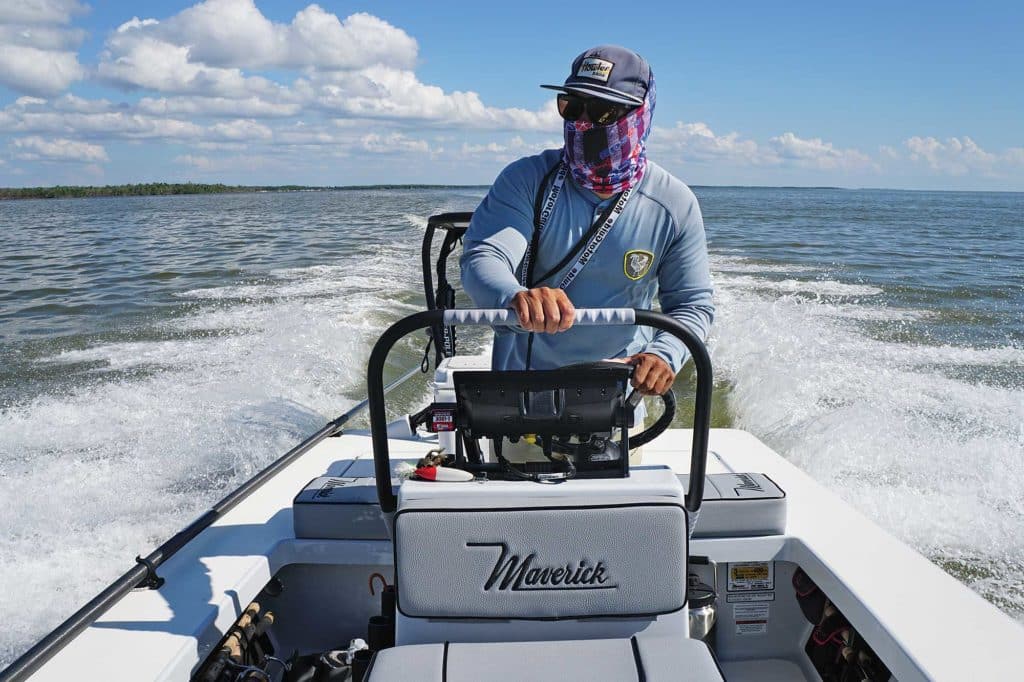
Securely Seated
Even crewmembers who are seated will appreciate having a place to hold on in rough conditions. For example, make sure passengers using transom bench seats have a handrail within easy reach. The Dive-N-Dog 12-inch stainless-steel grab rail (about $50) is easy to install along a bulkhead next to the seating.
Descending just two or three steps into a cabin or console interior can be tricky in rough seas, so it’s important to have a handrail just inside the companionway. It lets you balance yourself whether entering or exiting the interior to avoid slips, spills and possible injuries.
Read Next: 10 Ways to Keep the Deck Safer Aboard Your Fishing Boat
Embarking and disembarking from the boat is usually not too difficult, but it can be dicey when stepping down from a fixed dock at low tide. That’s where the Taco Marine Come-On Aboard handle (about $290) can help. This handle inserts into a gunwale rod holder, allowing passengers to steady themselves when stepping from the dock to the deck and vice versa.
Better Grip
Bare stainless-steel or aluminum handrails can become a bit uncomfortable and slippery in wet conditions. To alleviate this, mariners through the years have wrapped rails with cordage using a variety of braiding techniques.
One of the most common is the French hitch. As with most braiding methods, it is simple to do, once you get it started. Today, most boaters use paracord to apply a French hitch to a rail. Paracord is softer than other types of cord, and thus easier on hands.
If you’d rather not learn the French hitch, Edson offers an easy-to-apply alternative: ComfortGrip. Available in 8- and 12-inch adhesive strips, these soft, durable Santoprene foam grips feature finger grooves, and fit 1- and 1¼-inch-diameter rails. A pack of three 8-inch ComfortGrips sells for $25; the 12-inch three-pack sells for $29.
To make your fishing boat as safe as possible, make sure you have a place to hold on, wherever you happen to move, stand or sit while at sea.

